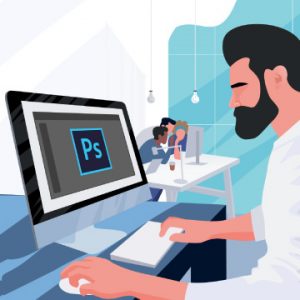Badly faded slides or prints can be rescued – once they have been digitised. If you have a lot to do and the funds a film scanner will be far superior to an attachment on a flat-bed scanner. Jane’s suggestion is not a bad one – I’ve had some success digitising slides using my G3 and a cannibalised slide viewer. But you will get the best results using a proper film scanner (but check it can take the size of slides that you have – I guess if they date back to the 1930s some may not be 35mm)
Once you have the slides digitisised then a lot can be done with the images. Katrin Eisemann’s book on restoration and retouching has all sorts of hints for increasing the density of faded slides – some of the techniques can only be done in the full version of PS or by using add-ons to Elements, but a lot of the material – increasing image density by using blending modes and levels adjustment layers, cloning to remove blemishes, dust, mould and texture renewal use the basic Elements tools. There are also a couple of books out on restoration and retouching specifically geared to using Elements but I haven’t tried them.
Susan S.
Re film scanners: I bought a Minolta Dimage Dual Scan II about a year ago for $250. That model is now obsolete, replaced by the Scan III which is even better. Max resolution is 2820 dpi which far exceeds what you would get from a camera attachment. A 35mm slide scanned at that resolution is almost 10 megapixels. You can buy more expensive film scanners with even higher resolution and many additional features.
As Susan says, a film scanner is the way to go if you can afford it. Bert
Bob, could you say a little more about that plug-in? It doesn’t sound familiar, although you might have mentioned it before and I just "wasn’t listening"! 🙂
And I third (fourth? fifth?) the suggestion about a good slide scanner. Mine is quite old in "technology years" but having one of any kind sure beats the other options for getting this kind of project done.
Freda,
It seems to be the consensus that one really needs a dedicated Slide Scanner for such a project (much better results than using a Flatbed with an adapter)
Freda, if you’re really going to try making your way through 3,000 slides – or even half that many, I’d definitely recommend a dedicated slide scanner. It’s not just a matter of quality and resolution, but also a matter of how many years of your life you want to spend handling those things! Pretty decent flatbeds are available for under $100, so if you need both it wouldn’t be unreasonable to buy one of each. There’s just no way I’d want to do many slides on a flatbed with an adapter for a number of reasons.
JANE,
Will that be an "Eclecticacademy" class?
I want to repeat the PSE class but would be interested in the Restoration class. Gosh, I hope we don’t get kicked off for discussing classes again….but how can I get the most use out of Elements without some classes!
Marty
